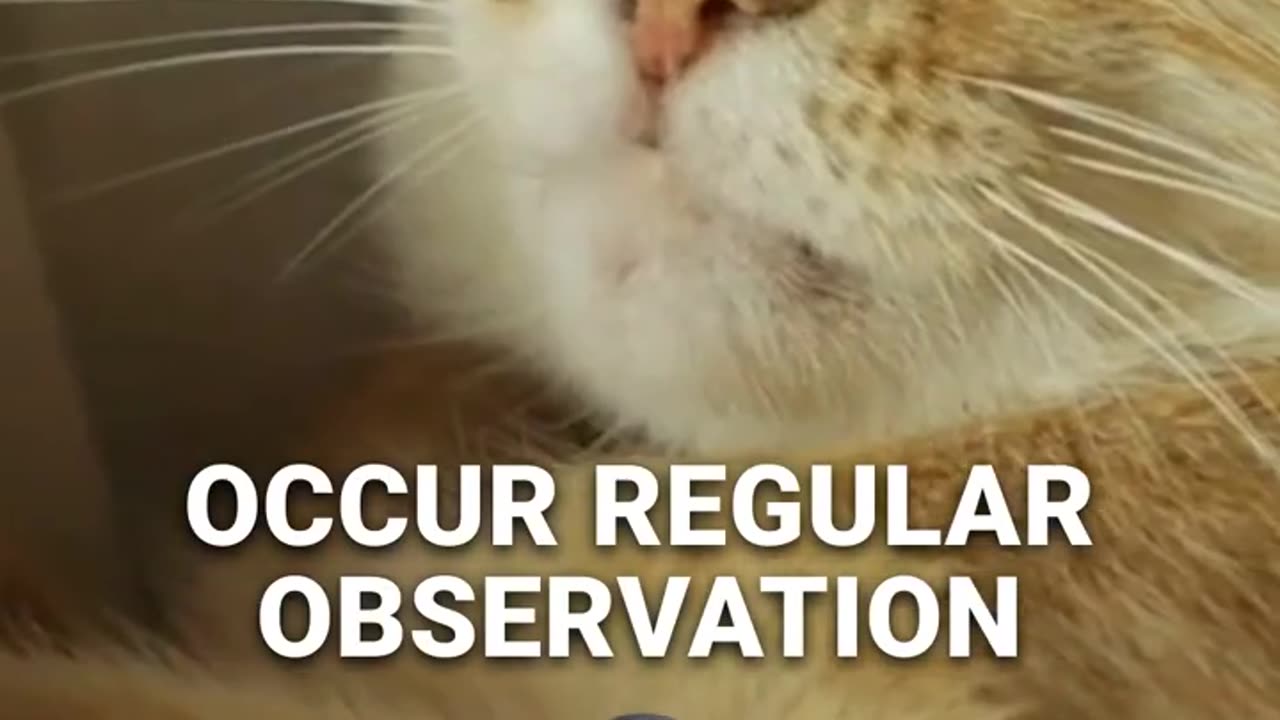Premium Only Content

Cat’s Purring Best Way To Communicate With Their Human.
While purring is a significant form of communication for cats, it's not necessarily the "best" way to communicate with their human. Cats use a variety of vocalizations, body language, and behaviors to convey their needs, feelings, and desires. Purring is indeed a fascinating aspect of feline communication and can indicate contentment, relaxation, or even a desire for attention. However, it's essential to consider a cat's overall body language and behavior to understand their communication effectively.
Here are some common ways cats communicate with their humans:
Purring: Often associated with contentment, relaxation, or comfort. Cats may purr when they're being petted, cuddled, or when they're feeling relaxed in their environment.
Meowing: Cats meow for various reasons, including seeking attention, expressing hunger, greeting their human, or communicating discomfort. The tone, pitch, and frequency of meows can convey different messages.
Body Language: Cats use their body language to communicate a wide range of emotions and intentions. For example, a cat may arch its back and raise its fur when feeling threatened or frightened, while a slow blink can indicate trust and affection.
Grooming: Grooming behaviors, such as licking themselves or their human, can be a sign of affection, bonding, or even a request for attention.
Kneading: Cats may knead with their paws on soft surfaces or on their human's lap. This behavior is often associated with contentment and relaxation, reminiscent of their kittenhood when they kneaded their mother's belly to stimulate milk flow.
Bringing Gifts: Some cats may bring their humans "gifts" in the form of prey, such as mice or birds. While this behavior may seem perplexing to humans, it's a natural instinct for cats to share their resources and demonstrate hunting prowess.
Understanding and responding to your cat's communication cues can strengthen your bond and enhance your relationship. Paying attention to their vocalizations, body language, and behaviors allows you to meet their needs and provide a fulfilling and enriching environment.
-
 10:17
10:17
Dermatologist Dr. Dustin Portela
1 day ago $6.35 earnedOlay Cleansing Melts: Dermatologist's Honest Review
43.3K -
 1:02:20
1:02:20
Trumpet Daily
1 day ago $23.55 earnedObama’s Fake World Comes Crashing Down - Trumpet Daily | Dec. 20, 2024
27.3K34 -
 6:29
6:29
BIG NEM
21 hours agoCultivating God Mode: Ancient Taoist NoFap Practices
21.2K6 -
 30:53
30:53
Uncommon Sense In Current Times
1 day ago $6.01 earned"Pardon or Peril? How Biden’s Clemency Actions Could Backfire"
42.6K2 -
 40:01
40:01
CarlCrusher
19 hours agoSkinwalker Encounters in the Haunted Canyons of Magic Mesa - ep 4
40.9K2 -
 59:44
59:44
PMG
1 day ago $4.29 earned"BETRAYAL - Johnson's New Spending Bill EXPANDS COVID Plandemic Powers"
50.2K19 -
 6:48:50
6:48:50
Akademiks
17 hours agoKendrick Lamar and SZA disses Drake and BIG AK? HOLD UP! Diddy, Durk, JayZ update. Travis Hunter RUN
172K28 -
 11:45:14
11:45:14
Right Side Broadcasting Network
9 days agoLIVE REPLAY: TPUSA's America Fest Conference: Day Three - 12/21/24
355K28 -
 12:19
12:19
Tundra Tactical
17 hours ago $13.10 earnedDaniel Penny Beats Charges in NYC Subway Killing
72.1K14 -
 29:53
29:53
MYLUNCHBREAK CHANNEL PAGE
1 day agoUnder The Necropolis - Pt 1
161K66